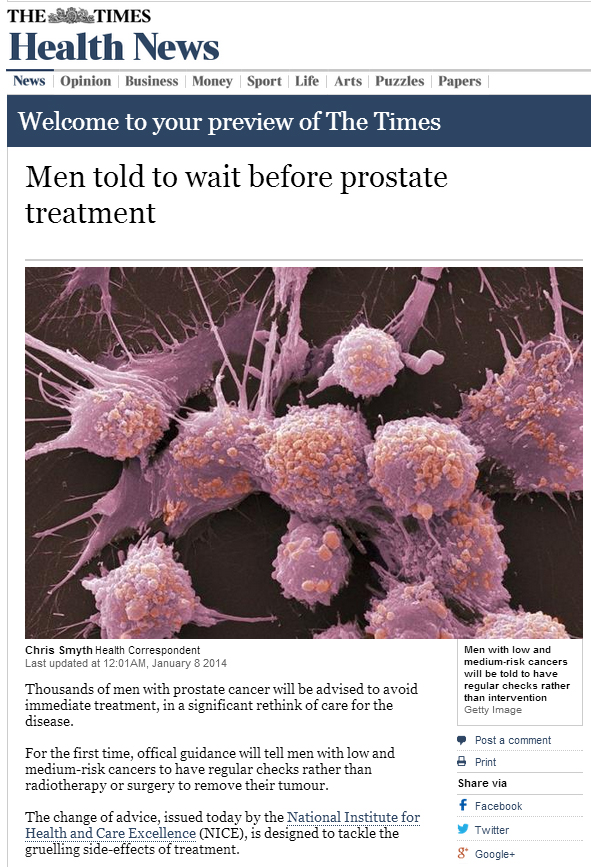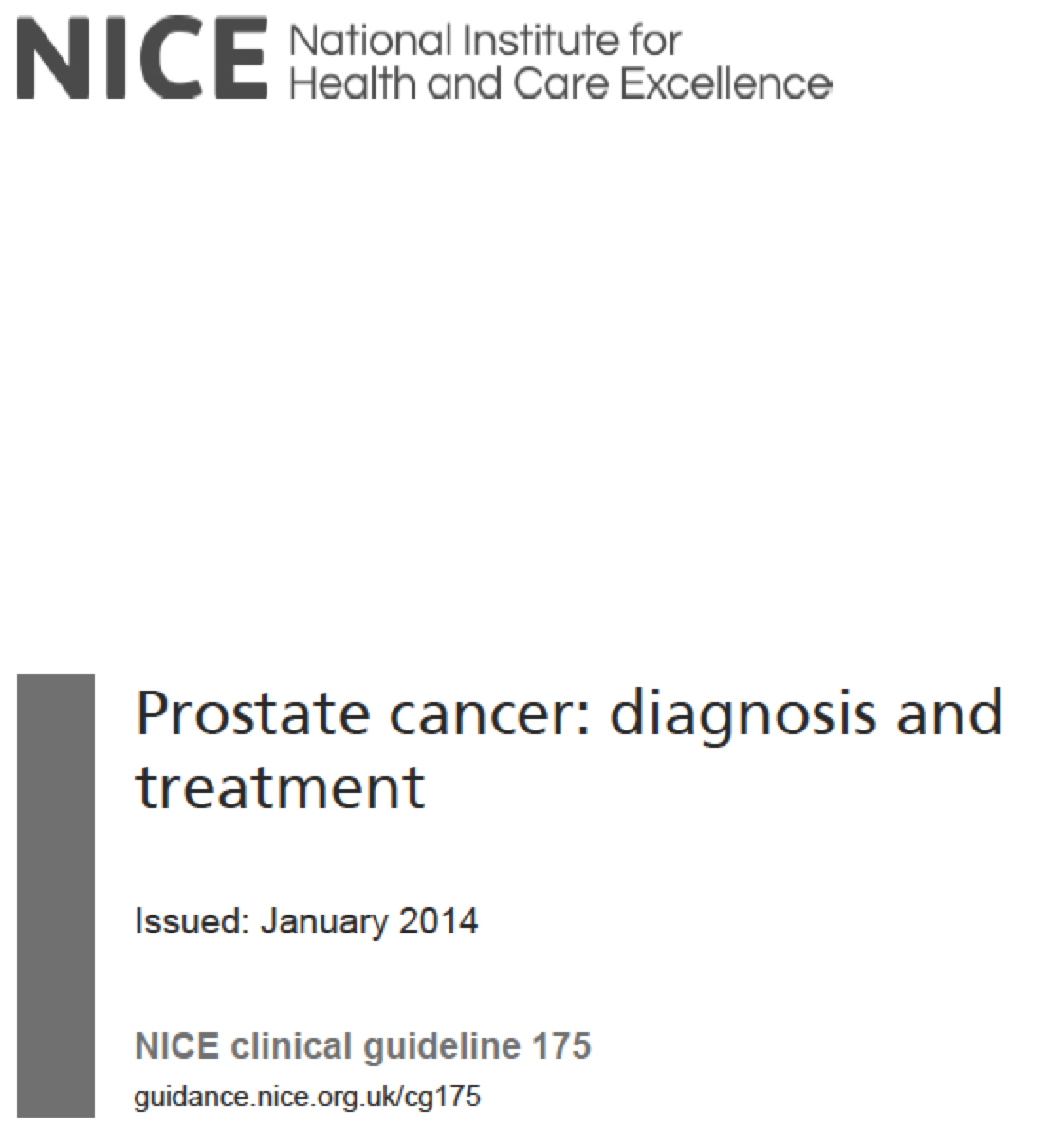Avoiding treatment in prostate cancer: time and money, please?
 It seems impossible to say anything regarding prostate cancer without inciting emotionally charged controversy, even when based on high-level evidence. The updated prostate cancer guidelines from the National Institute of Clinical Health and Excellence (NICE) this week sparked media attention that focused on the role of active surveillance for low and intermediate risk groups.
It seems impossible to say anything regarding prostate cancer without inciting emotionally charged controversy, even when based on high-level evidence. The updated prostate cancer guidelines from the National Institute of Clinical Health and Excellence (NICE) this week sparked media attention that focused on the role of active surveillance for low and intermediate risk groups.
 The newspaper headlines state that patients with prostate cancer have been told to avoid immediate treatment. Whether patients are to go against advice given by their doctor or whether this is an attempt by the government to save money is unclear if the online comments are anything to go by. On a local level, patients who are awaiting treatment are questioning their choices.
The newspaper headlines state that patients with prostate cancer have been told to avoid immediate treatment. Whether patients are to go against advice given by their doctor or whether this is an attempt by the government to save money is unclear if the online comments are anything to go by. On a local level, patients who are awaiting treatment are questioning their choices.
The sensational implication is that active surveillance is a novel management strategy that was previously not considered. In fact, the equally controversial guidelines from 2008 promoted this alternative: the phrase “suitable for all options including active surveillance” is expressed frequently throughout the country when discussing individual cases at multidisciplinary team meetings.
There is no doubt that a proportion of men who undergo radical treatments may not benefit. The challenges arise in determining who these men are within the constraints of NHS pathways. A standard pathway for a UK man is to request a PSA blood test from his GP, commonly sparked by concerned relatives or friends and endorsed by high-profile survivors and campaigners. A raised result then triggers a “two-week” urgent suspected cancer referral and a clock ticks with diagnosis, staging and treatment to be completed within a 62-day target.
Inevitably, the urgency of referral will influence patient beliefs regarding the seriousness of their condition. A quick online search of comments on recent mainstream articles will throw up anecdotes from men who have sadly failed “wait and see” policies by progressing and finding themselves with incurable disease. A well informed patient will know that a standard transrectal biopsy will have under-estimated his risk in a third of cases. In this emotional state and limited time-frame, our patients are expected to make a rational decision regarding complex management choices – definitive treatment with associated side effects but the knowledge that every effort has been made to “cure” the disease, or what may be a lifetime of repeated, potentially dangerous, biopsies, blood tests and prostate examinations with risk of failure and “living with cancer”. Active surveillance is hardly an attractive option when considered in these terms.
What’s the answer? Detailed evaluation of prostate disease can be achieved with improved imaging with multiparametric MRI in conjunction with a modern transperineal biopsy technique that evaluates the prostate more thoroughly. Suitable patients for active surveillance (and radical treatment) can then be potentially better selected and counseled with higher confidence. Of course, resources are required for this, but shouldn’t this be what we should be campaigning for? And time to deliver this.
Benjamin Disraeli said, “He who gains time gains everything” and perhaps this is the greatest gift we can give to our patients. The lack of time pressure in terms of clinical urgency in low risk prostate cancer gives ample opportunity to get it right in these patients.
I can’t agree that the NICE guidelines are designed to cut NHS costs (active surveillance may cost the same as surgery) but I do fear that without better resources and the reduction in target pressures for low risk prostate cancer, active surveillance will remain an under-utilized management option for many who would benefit from it.
Peter Acher





Great blog. I wonder what the impact would be on the PSA screening cohort from the ERSPC trial if all had been diagnosed with a mpMRI and TP biopsy. I suspect a much larger chunk of the cohort would have opted for active surveillance and the NNT ratio of 1:100 would have been reduced dramatically. Improved diagnostics, encouragement of active surveillance for low grade disease will make PSA screening much more palatable for GP’s and the general population.